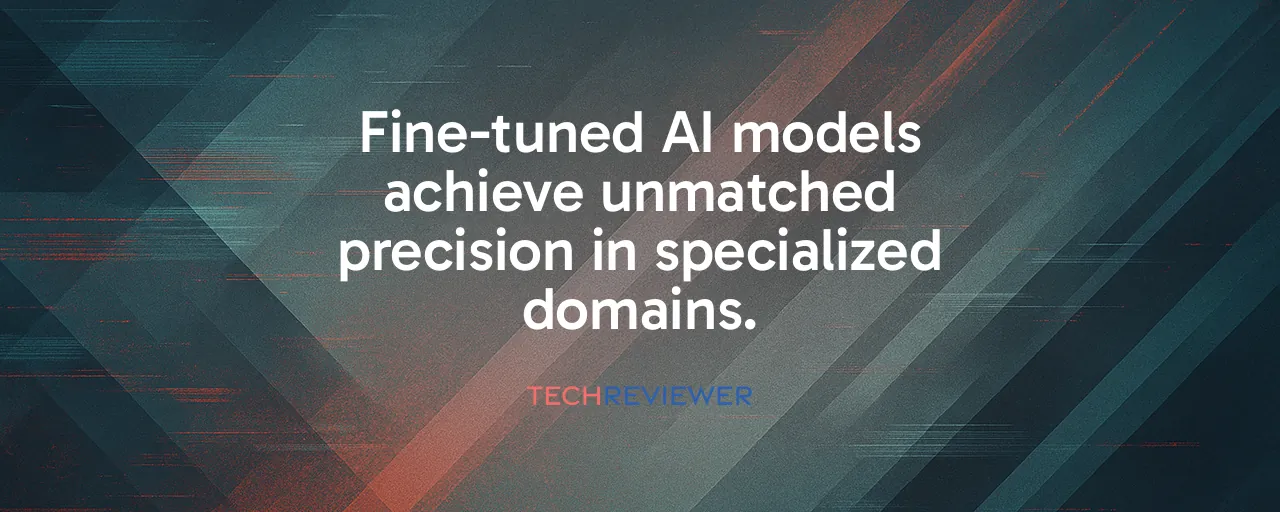The Promise of Tailored AI
Artificial intelligence has come a long way, but generic models often fall short in specialized fields like law or e-commerce. Fine-tuning, the process of customizing pre-trained models with targeted data, delivers remarkable precision. For instance, Harvey AI, a legal tech startup, hit $100 million in annual revenue by fine-tuning models to serve 42% of top U.S. law firms, with lawyers favoring its outputs over GPT-4 in blind tests. Similarly, e-commerce platforms have slashed response times from 48 hours to 30 seconds, boosting customer satisfaction from 78% to 94% through fine-tuned models. These successes show how tailoring AI to specific domains can yield measurable gains, embedding industry knowledge that generic models struggle to replicate.
The appeal lies in consistency. Fine-tuned models learn a company's terminology, workflows, and standards, producing outputs that feel intuitive and reliable. Unlike prompt engineering, which requires constant tweaking, fine-tuning bakes expertise directly into the model. This approach has enabled smaller models, some as lean as one billion parameters, to outperform larger counterparts, cutting costs while maintaining quality. Yet, the path to these results is far from simple, as organizations quickly discover when they dive into the process.
Why Expertise Holds the Key
Fine-tuning requires a level of skill that's increasingly rare. Many machine learning engineers hired post-2020 focus on integrating AI tools rather than building models from scratch. A key industry observation is that newer engineers often lack the foundational knowledge needed to navigate fine-tuning's complexities, like monitoring training signals or refining datasets. Reinforcement learning methods, such as those used by Meta for LLaMA, add another layer of nuance, requiring careful tuning to avoid issues like overfitting, where models memorize data instead of generalizing.
The skills gap isn't just a hiring issue; it's a structural one. Senior engineers with fine-tuning experience are scarce, and companies rarely invest in training. This creates a bottleneck, as seen in financial firms deploying fraud detection systems. These firms learned that continuous monitoring was critical to adapt to evolving transaction patterns, yet they struggled to find staff capable of maintaining these systems long-term. Without expertise, even the best fine-tuned models risk becoming outdated or unstable.
Real-World Wins and Hard Lessons
To understand fine-tuning's impact, consider two cases. Harvey AI's legal models show how collaboration with domain experts during data preparation can lead to standout results. By layering fine-tuning to include both legal knowledge and client-specific needs, Harvey achieved 70% customer retention after 13 months. This approach required heavy investment in expert feedback, underscoring the need for human insight to make fine-tuning effective. The lesson? Domain expertise isn't optional; it's the backbone of success.
In e-commerce, fine-tuned recommendation systems have driven sales by tailoring suggestions to customer behavior. One platform saw an 80% automation rate for inquiries, saving $21,000 monthly from a $1,000 investment. But the catch was clear: without ongoing data refinement, performance could stagnate as customer preferences shifted. Both cases reveal a truth about fine-tuning: it delivers when done right but requires vigilance and resources to sustain.
Balancing Ambition With Reality
Despite its potential, fine-tuning isn't a universal fix. Some argue that prompt engineering or Retrieval-Augmented Generation offers simpler alternatives, especially for organizations with limited budgets. These methods sidestep the need for deep expertise and hefty infrastructure, allowing quicker wins. For example, RAG systems can pull fresh data without retraining, unlike fine-tuned models that grow stale without updates. Yet, these approaches often lack the precision of fine-tuning for high-stakes tasks, where a 90% preference rate or 0.2% hallucination rate can make or break a business case.
The cost is another hurdle. Fine-tuning for flagship models like Llama 3.1 topped $50 million in 2025, involving teams of over 200 specialists. Smaller organizations turn to tools like Hugging Face or parameter-efficient methods like LoRA to cut costs, but even these require skilled oversight. Companies often lean toward platform tools from AWS or Azure, prioritizing scalability over customization, even if it means settling for less tailored results. This trade-off reflects a broader tension: the drive for precision versus the reality of resource constraints.
What Lies Ahead for Fine-Tuning
Looking forward, fine-tuning will likely shape AI's next chapter. Advances like Direct Preference Optimization and synthetic data generation, costing fractions of a cent per sample, are lowering barriers. Open-source tools from Hugging Face and research from places like the Allen Institute are making fine-tuning more accessible, enabling smaller players to compete. Yet, the skills gap looms large, with only 10% of ML job postings in 2025 explicitly seeking fine-tuning expertise.
The future hinges on collaboration. Partnerships between model providers like OpenAI and domain experts, as seen with Harvey AI, could bridge gaps in knowledge and resources. Educational programs must evolve to teach both foundational ML and modern fine-tuning techniques, ensuring a pipeline of talent. For now, fine-tuning offers a powerful edge for those who can master it, but its success depends on organizations willing to invest in expertise and infrastructure to match their ambitions.
